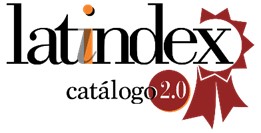Processos de raciocínio espacial na representação de figuras 3D por alunos do 1.º ano do ensino básico
DOI:
https://doi.org/10.48489/quadrante.23007Palavras-chave:
raciocínio espacial, estruturação espacial, representações, discussões coletivasResumo
Neste artigo, procuramos analisar como é que o registo no plano de figuras 3D por alunos do 1.º ano promove o seu raciocínio espacial e a sua estruturação espacial. Para isso, analisamos os registos de sete alunos em duas tarefas e as comunicações nos momentos de discussão coletiva, em sala de aula, de algumas dessas resoluções. Os dados foram recolhidos no ciclo 1 de uma investigação baseada em design. Os resultados mostram que os alunos registam as suas construções segmentando-as em diferentes partes, usando diferentes formas de registo para evidenciar relações entre essas partes, como o desenho de quadrados enviesados, na estruturação local, ou no desenho de cubos mais pequenos ou de códigos numéricos para representar diferentes camadas, no caso da estruturação global. No caso da estruturação local, por vezes, os registos apresentam erros de contagem ou de coordenação de partes perpendiculares. Esta estruturação espacial parece estar ancorada em processos de raciocínio espacial, associados a compreender e transformar, que permitem relacionar as figuras 3D com a sua representação no plano, como relacionar, reorganizar, segmentar, mudar de dimensão e localizar. A valorização da comunicação matemática, assente em diferentes suportes, permite compreender melhor as ideias dos alunos e aprofundar a sua estruturação espacial.
Referências
Battista, M. T. (2007). The development of geometric and spatial thinking. In F. Lester (Ed), Second handbook of research on mathematics teaching and learning (pp. 843–909). Reston, VA: NCTM.
Battista, M. T., & Clements, D. H. (1996). Students’ understanding of three-dimensional rectangular arrays of cubes. Journal for Research in Mathematics Education, 27(3), 258–292.
Blanco, T., Godino, J., Sequeiros, P., & Mantecón, J. M. (2019). Skill levels on visualization and spatial reasoning in pre-service primary teachers. Universal Journal of Educational Research, 7(12). 2647–2661. https://doi.org/10.13189/ujer.2019.071212
Bruce, C. D., & Hawes, Z. (2015). The role of 2D and 3D mental rotation in mathematics for young children: What is it? Why does it matter? And what can we do about it? ZDM Mathematics Education, 47(3), 331–343. https://doi.org/10.1007/s11858-014-0637-4
Clements, D. H., Sarama, J., Swaminathan, S., Weber, D., & Trawick-Smith, J. (2018). Teaching and learning Geometry: Early foundations. Quadrante, 27(2), 7–31.
Davis, B., Okamoto, Y., & Whiteley, W. (2015). Spatializing school mathematics. In B. Davis (Ed.) Spatial reasoning in the early years: Principles, assertions, and speculations (pp. 139–150). New York: Routledge.
Gravemeijer, K., & Cobb, P. (2006). Design research from the learning design perspective. In T. Plomp & N. Nieveen (Eds.), Educational design research (pp. 72–113). Enschede, The Netherlands: Netherlands Institute for Curriculum Development (SLO).
Gutiérrez, A. (1996). Children’s ability for using different plane representations of space figures. In A. R. Batturo (Ed.), New directions in geometry education (pp. 33-42). Brisbane, Australia: Centre for Mathematics and Science Education, Q.U.T.
Gutiérrez, A. (1998). Las representaciones planas de cuerpos 3-dimensionales en la enseñanza de la geometría espacial. Revista EMA, 3(3), 193-220.
Hallowell, D. A., Okamoto, Y., Romo, L. F., & La Joy, J. R. (2015). First-graders’ spatial-mathematical reasoning about plane and solid shapes and their representations. ZDM Mathematics Education, 47(3), 363–375. https://doi.org/10.1007/s11858-015-0664-9
Mulligan, J. (2015). Looking within and beyond the geometry curriculum: Connecting spatial reasoning to mathematics learning. ZDM Mathematics Education, 47(3), 511–517. https://doi.org/10.1007/s11858-015-0696-1
Nunes, M. J., & Rodrigues, M. (2018). Compondo e desenhando formas tridimensionais: Um contributo para a caracterização do raciocínio espacial de crianças de 5 anos. Quadrante, 27(2), 63–88.
Panorkou, N., & Pratt, D. (2009). Mapping experience of dimension. In M. Tzekaki, M. Kaldrimidou & H. Sakonidis (Eds.), Proceedings of the 33th Conference of the International Group for the Psychology of Mathematics Education (Vol. 4, pp. 281-288). Thessaloniki, Greece: PME.
Radford, L., & Barwell, R. (2016). Language in mathematics education research. In A. Gutiérrez, G. C. Leder, & P. Boero (Eds.), The second handbook of research on the psychology of mathematics education (pp. 275–313). Rotterdam: Sense Publishers.
Sack, J., & van Niekerk, R. (2009). Developing the spatial operational capacity of young children using wooden cubes and dynamic simulation software. In T. Craine & R. Rubinstein (Eds.), Understanding geometry for a changing world: Seventy-first yearbook (pp. 141-154). Reston: NCTM.
Sfard, A. (2008). Thinking as communicating: Human development, the growth of discourses, and mathematizing. Cambridge: Cambridge University Press.
Sinclair, N., Moss, J., Hawes, Z., & Stephenson, C. (2018). Learning through and from drawing in Early Years Geometry. In K. Mix & M. T. Battista (Eds.), Visualizing mathematics: The role of spatial reasoning in mathematical thought (pp. 229-252). Cham, Switzerland: Springer. https://doi.org/10.1007/978-3-319-98767-5_11
Thom, J. S., & McGarvey, L. M. (2015). The act and artifact of drawing(s): Observing geometric thinking with, in, and through children’s drawings. ZDM Mathematics Education, 47(3), 465–481.
Van den Heuvel-Panhuizen, M., & Buys, K. (2008). Young children learn measurement and geometry: A learning-teaching trajectory with intermediate attainment targets for the lower grades in primary school. Rotterdam: Sense Publishers.
Downloads
Publicado
Como Citar
Edição
Secção
Licença
Direitos de Autor (c) 2020 Quadrante

Este trabalho encontra-se publicado com a Creative Commons Atribuição-NãoComercial 4.0.
Copyright (c) pertence à Quadrante. Contudo, encorajamos que os artigos sejam divulgados nos repositórios institucionais ou pessoais desde que seja identificada a sua publicação original na Quadrante e incluída a hiperligação para o site da revista.










